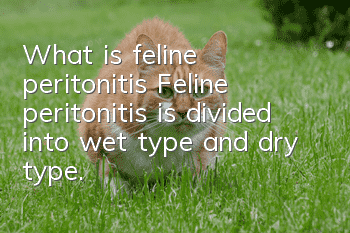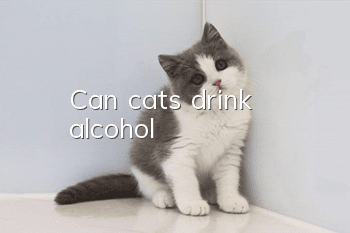What is feline peritonitis? Feline peritonitis is divided into wet type and dry type.

Feline peritonitis is a disease caused by cats infected with feline coronavirus and is extremely contagious. Feline peritonitis is divided into wet and dry types. Cats suffering from wet peritonitis will die within two months of onset. Cats with dry peritonitis will have symptoms such as weight loss and cloudy eyes, and a few will be accompanied by multiple progressive neurological symptoms.
Cat-borne peritonitis
Feline infectious peritonitis is a disease caused by infection with feline coronavirus, and the infection rate is very high. It is generally considered to be an infection through the mouth and nose. Cats that carry the virus will excrete the virus in their feces, and carrier cats will excrete the virus in their feces and infect cats living together; a small number of viruses can be transmitted through mechanical means such as clothing, food dishes, bedding, people, or insects.
Wet peritonitis
Most affected cats die within two months of onset. There is high protein exudate in the chest and abdomen. Depending on the amount of pleural effusion, symptoms may range from asymptomatic to wheezing or dyspnea. Progressive painless abdominal enlargement and male cats may have an enlarged scrotum. Vomiting or diarrhea may occur. Moderate to severe anemia. On clinical examination, it will be found that the muscles on both sides of the spine are progressively weakened and thinned, and the abdomen is progressively enlarged.
Dry peritonitis
The dry type mainly causes pyogranulomatous lesions of organs. Cats will show symptoms such as progressive weight loss, eye opacity, pyometra, miosis, and visual impairment. A small number of cases are accompanied by multiple progressive neurological symptoms, including hindquarter paralysis, spasmodic tremors, nystagmus, and personality changes. Nodular lesions appear in the liver, kidneys, spleen, lungs, omentum, and lymph nodes; mesenteric lymph node nodules can be palpated on abdominal palpation. Anemia, jaundice.
- What are cat whiskers used for?
- What are the reasons why cats are picky eaters? (Why is the kitten so picky?)
- Things to note when training your cat
- The hair above the cat's eyes is sparse and red
- What medicine should a female cat take if she has diarrhea?
- Do cats need to fight rabies?
- Can cats be beaten?
- How many times does a cat breathe in a minute?
- The difference between tofu cat litter and bentonite clay
- How long is the interval between vaccinations for kittens?



